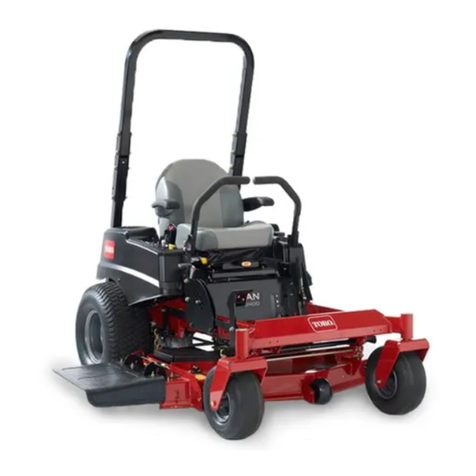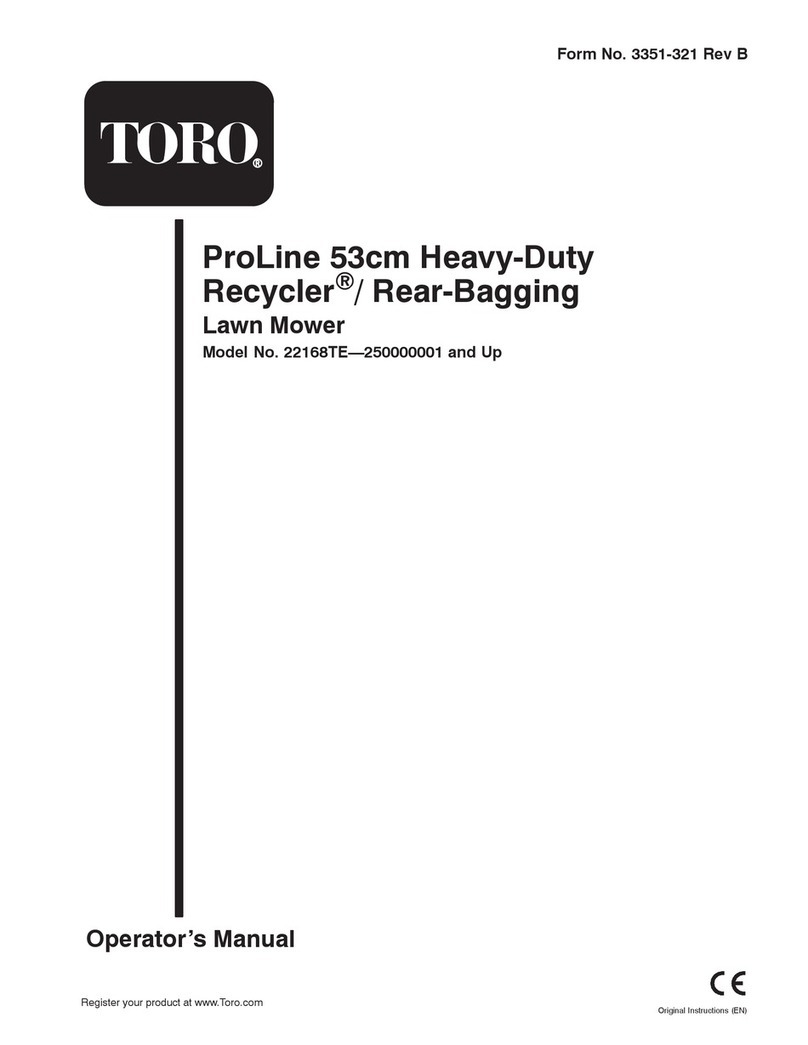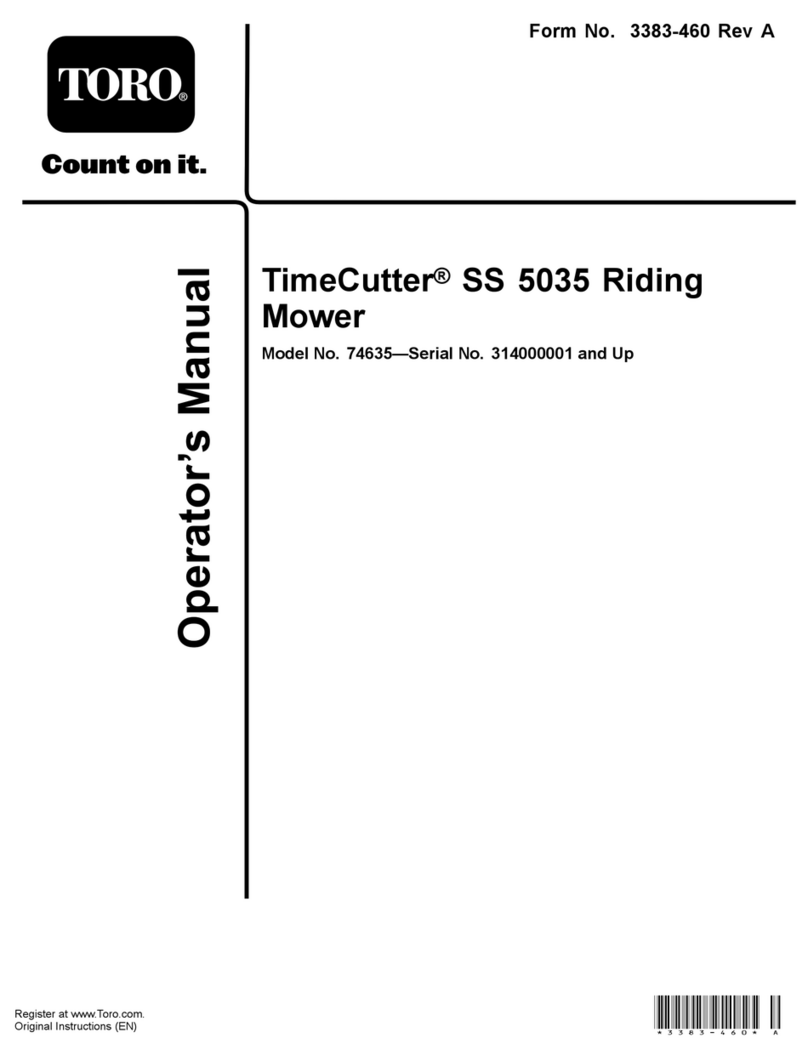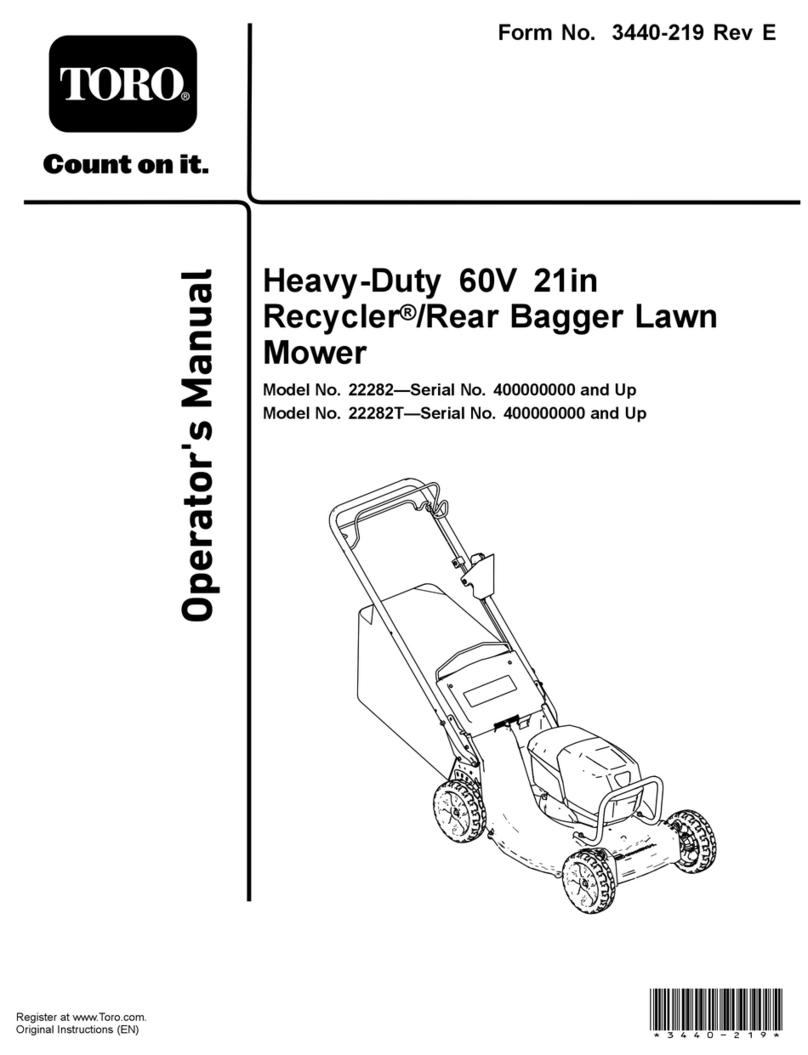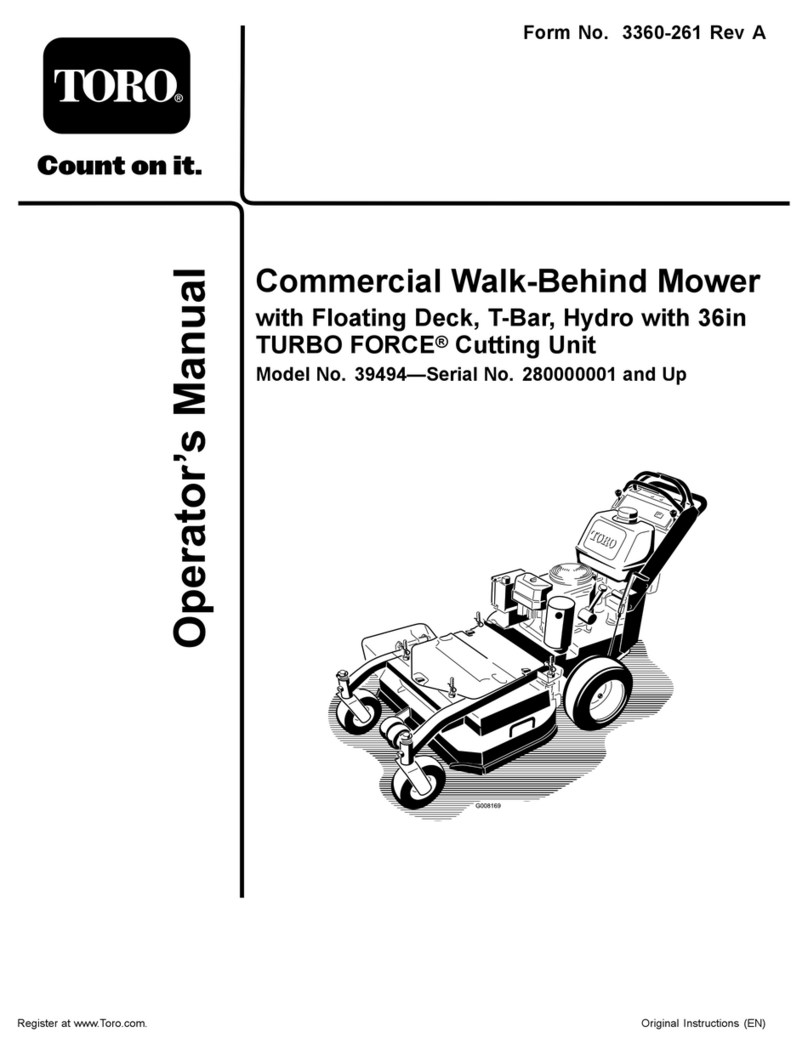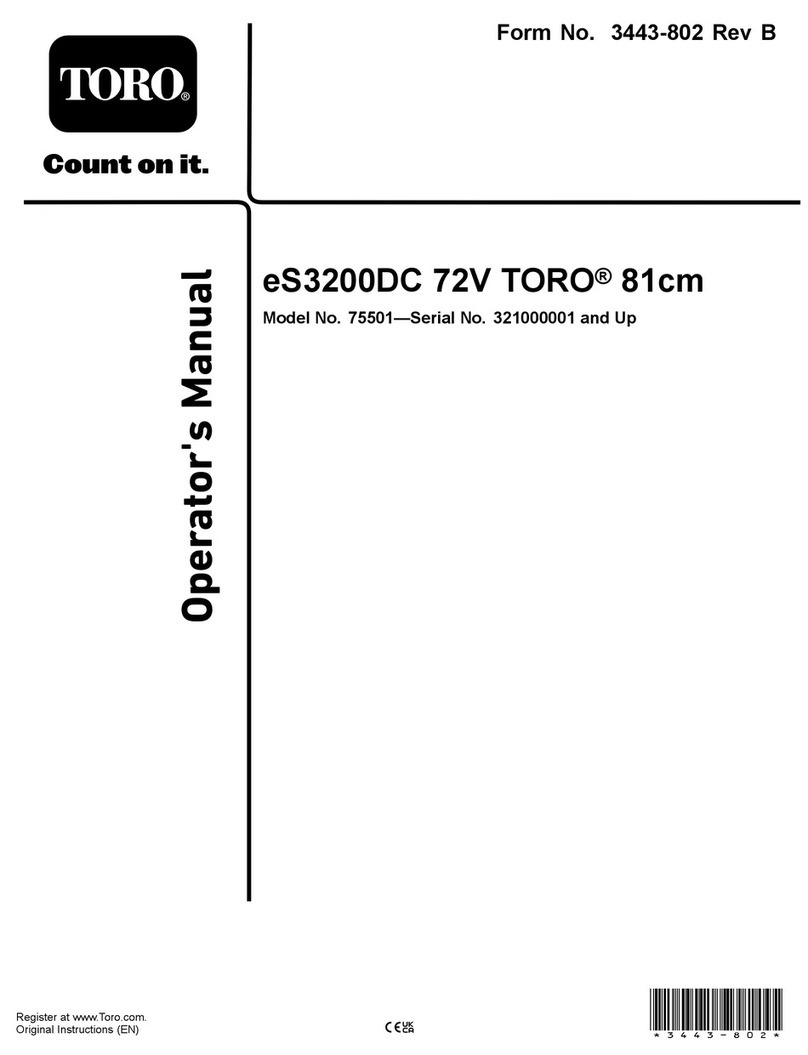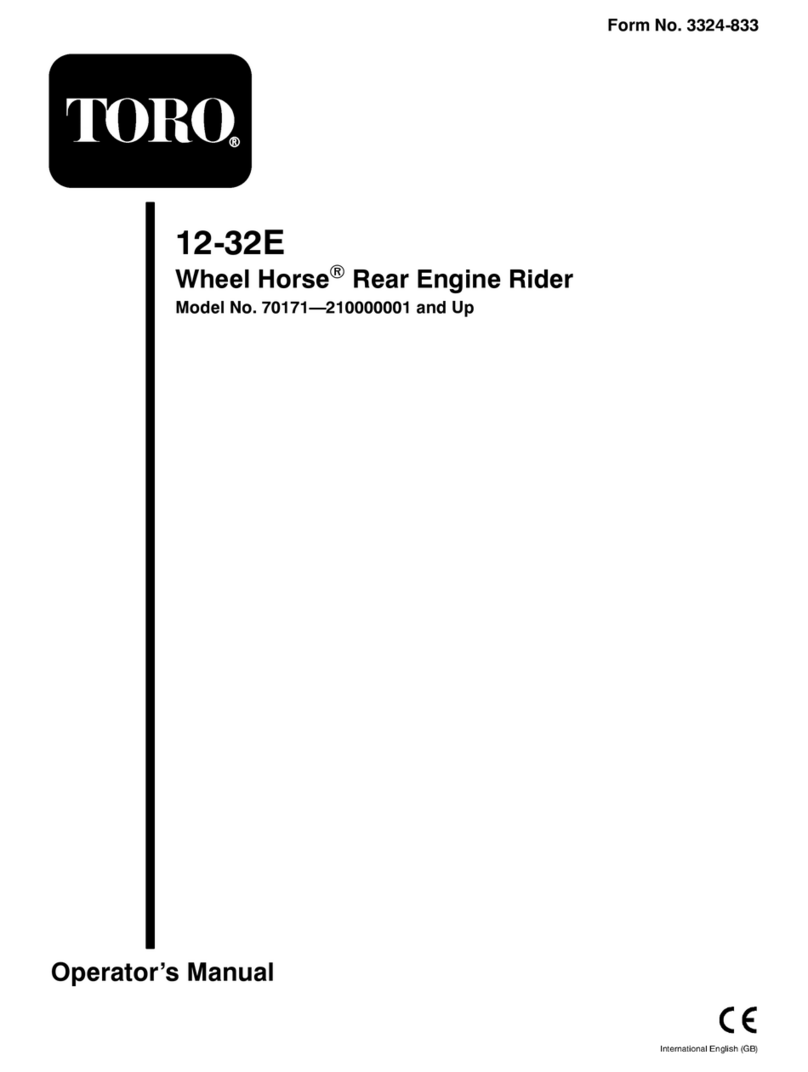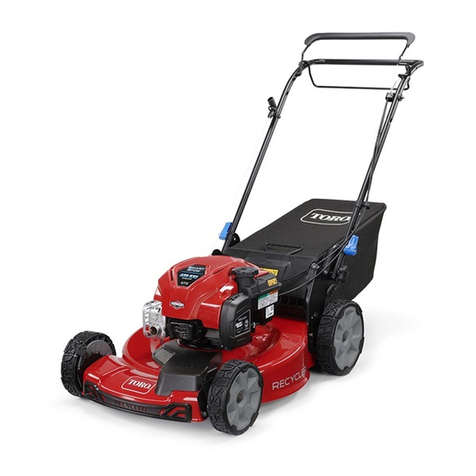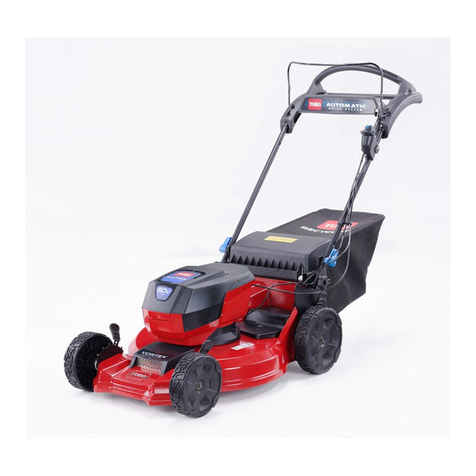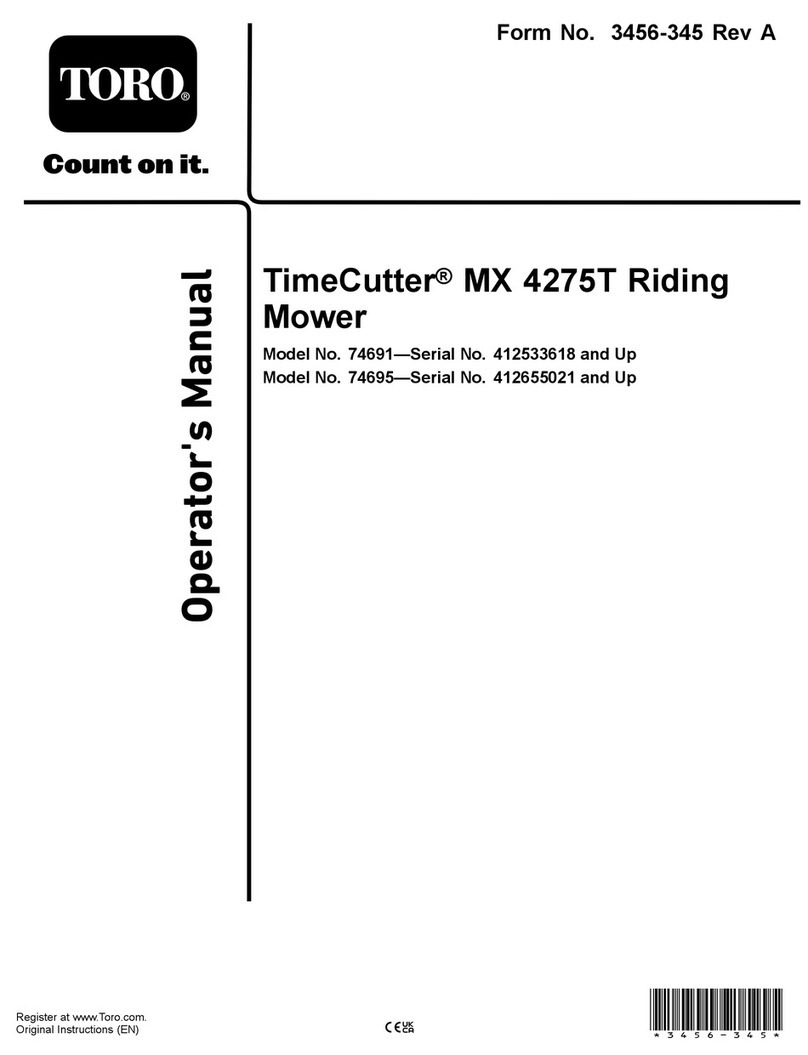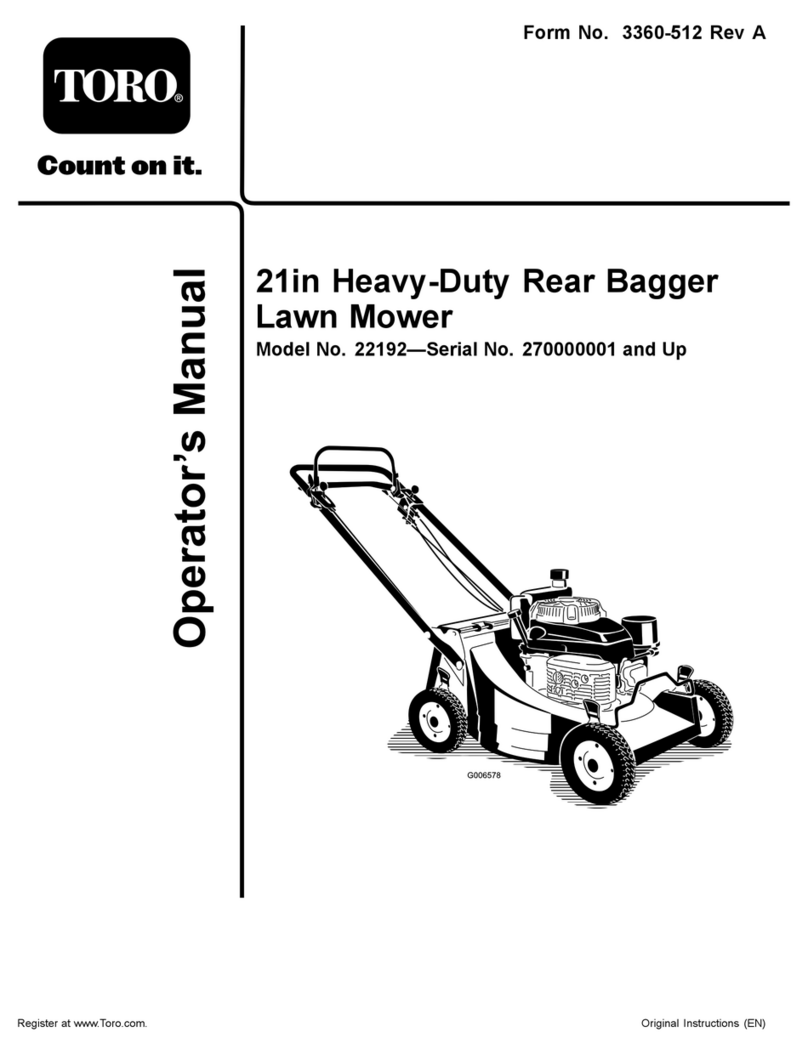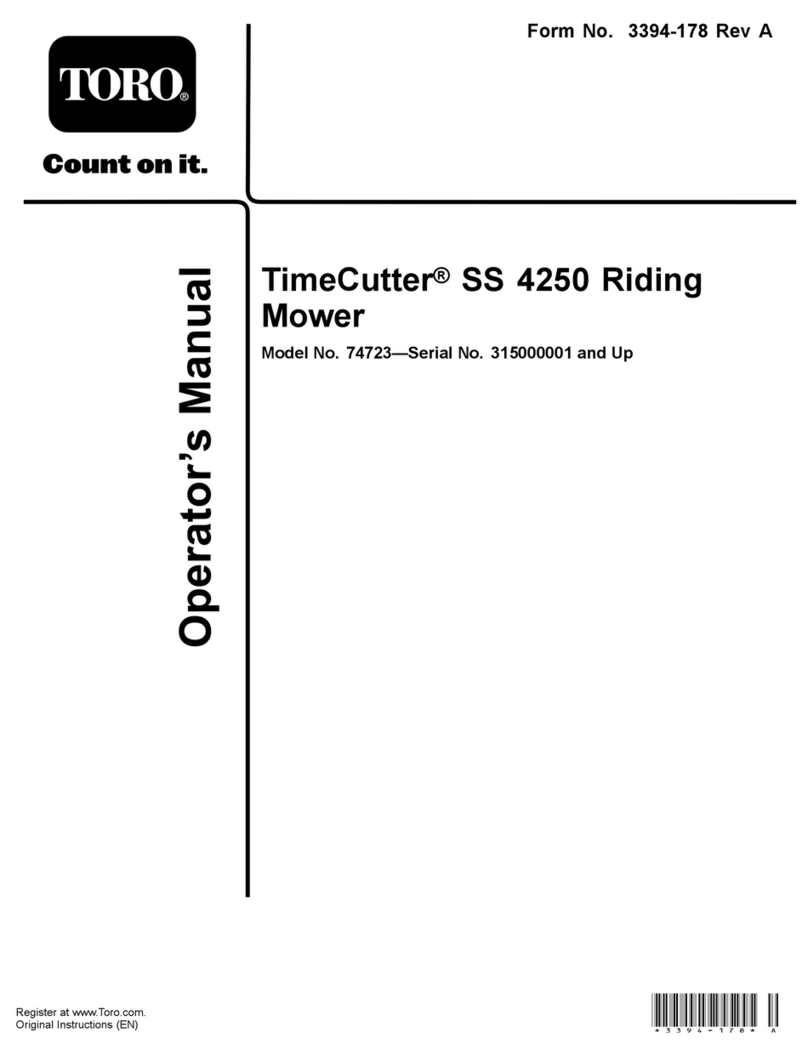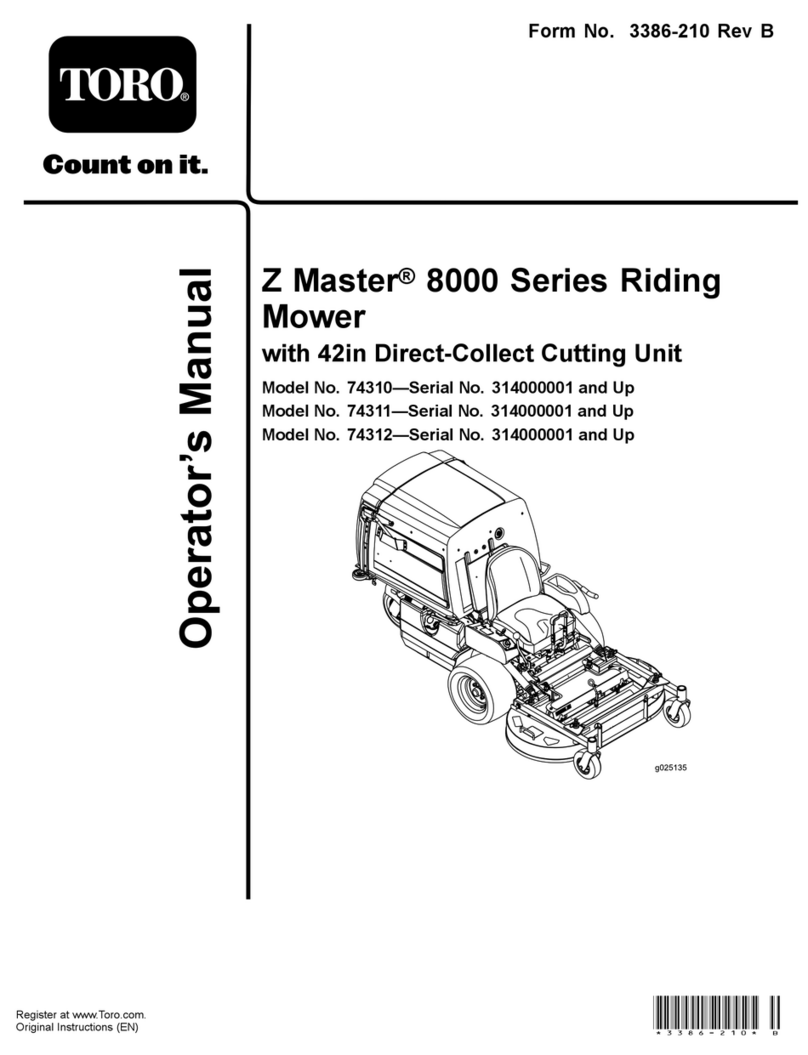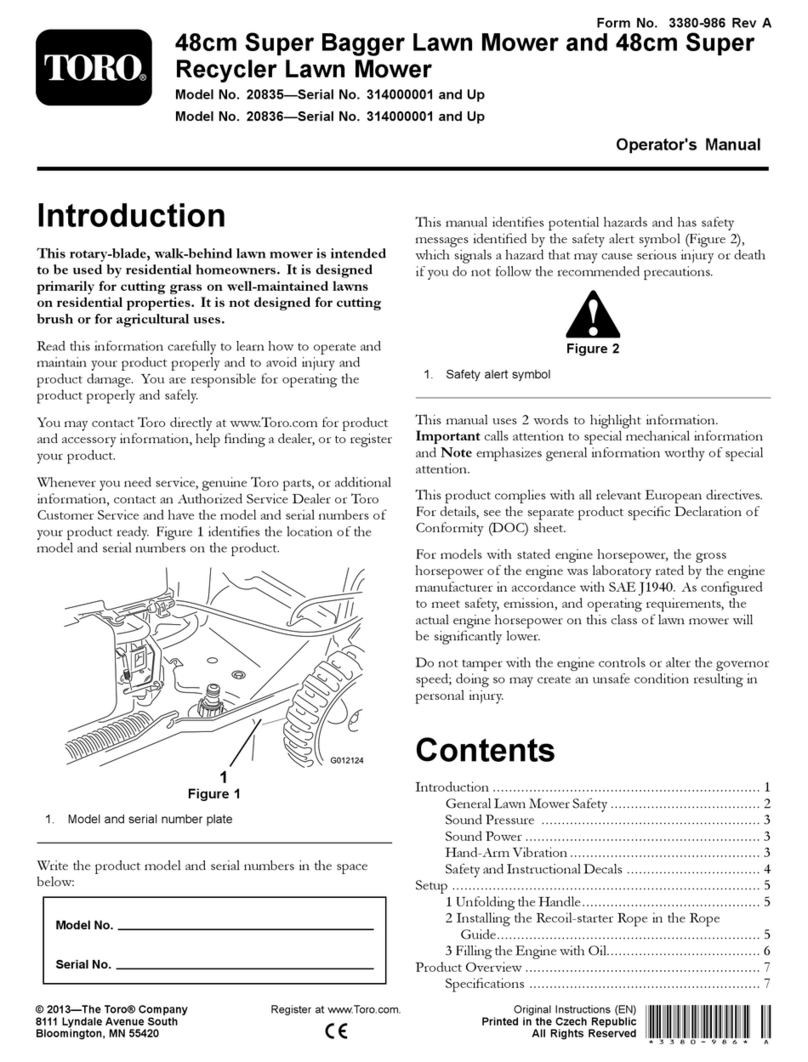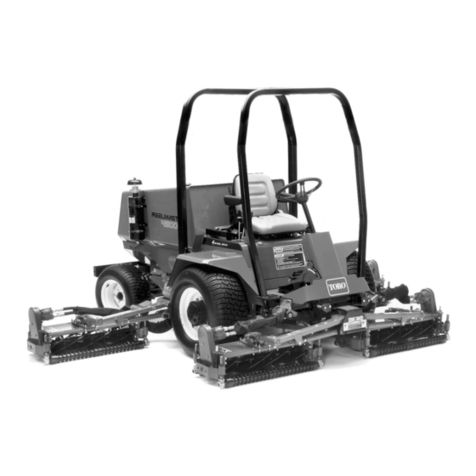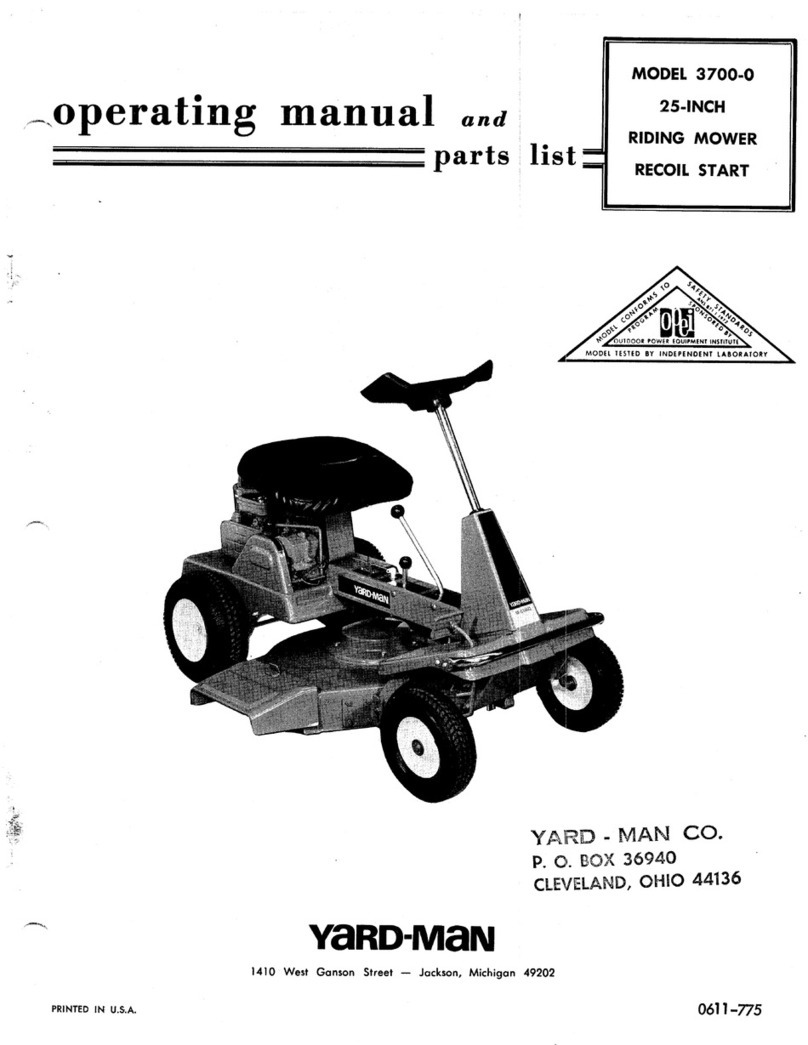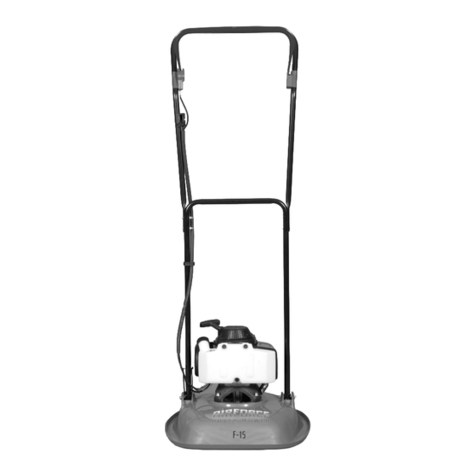
Contents
Safety . . . . . . . . . . . . . . . . . . . . . . . . . . . . . . . . . . . . . . . . . . . . . . . . . . . . . . . . . . . . . . . . . . . . . . . 3
General Safety . . . . . . . . . . . . . . . . . . . . . . . . . . . . . . . . . . . . . . . . . . . . . . . . . . . 3
Cutting Unit Safety . . . . . . . . . . . . . . . . . . . . . . . . . . . . . . . . . . . . . . . . . . . . . . 4
Safety and Instructional Decals . . . . . . . . . . . . . . . . . . . . . . . . . . 4
Setup . . . . . . . . . . . . . . . . . . . . . . . . . . . . . . . . . . . . . . . . . . . . . . . . . . . . . . . . . . . . . . . . . . . . . . . . 8
1 Preparing the Machine . . . . . . . . . . . . . . . . . . . . . . . . . . . . . . . . . . . . . 8
2 Installing the Cutting Unit to the T raction
Unit . . . . . . . . . . . . . . . . . . . . . . . . . . . . . . . . . . . . . . . . . . . . . . . . . . . . . . . . . . . . . . . . . 8
3 Leveling the Cutting Unit . . . . . . . . . . . . . . . . . . . . . . . . . . . . . . . . . . 9
4 Greasing the Cutting Unit . . . . . . . . . . . . . . . . . . . . . . . . . . . . . . . . . 9
Product Overview . . . . . . . . . . . . . . . . . . . . . . . . . . . . . . . . . . . . . . . . . . . . . . . . . . . 10
Specications . . . . . . . . . . . . . . . . . . . . . . . . . . . . . . . . . . . . . . . . . . . . . . . . . . 10
Attachments/Accessories . . . . . . . . . . . . . . . . . . . . . . . . . . . . . . . . . 10
Operation . . . . . . . . . . . . . . . . . . . . . . . . . . . . . . . . . . . . . . . . . . . . . . . . . . . . . . . . . . . . . . . . 10
Evaluating the Quality of Cut . . . . . . . . . . . . . . . . . . . . . . . . . . . . . 10
Leveling the Cutting Unit . . . . . . . . . . . . . . . . . . . . . . . . . . . . . . . . . . . 10
Adjusting the Height of Cut . . . . . . . . . . . . . . . . . . . . . . . . . . . . . . . . 1 1
Adjusting the Cutting-Unit Pitch . . . . . . . . . . . . . . . . . . . . . . . . 12
Adjusting the Anti-Scalp Rollers . . . . . . . . . . . . . . . . . . . . . . . . 13
Adjusting the Skid . . . . . . . . . . . . . . . . . . . . . . . . . . . . . . . . . . . . . . . . . . . . . 14
Adjusting the Flow Baf e . . . . . . . . . . . . . . . . . . . . . . . . . . . . . . . . . . 14
Positioning the Flow Baf e . . . . . . . . . . . . . . . . . . . . . . . . . . . . . . . . 14
Using the Side Discharge . . . . . . . . . . . . . . . . . . . . . . . . . . . . . . . . . 15
Operating T ips . . . . . . . . . . . . . . . . . . . . . . . . . . . . . . . . . . . . . . . . . . . . . . . . . 15
Maintenance . . . . . . . . . . . . . . . . . . . . . . . . . . . . . . . . . . . . . . . . . . . . . . . . . . . . . . . . . . . 16
Recommended Maintenance Schedule(s) . . . . . . . . . . . 16
Daily Maintenance Checklist . . . . . . . . . . . . . . . . . . . . . . . . . . . . . 16
Greasing the Castor-Arm Bushings . . . . . . . . . . . . . . . . . . 17
Removing the Cutting Unit from the T raction
Unit . . . . . . . . . . . . . . . . . . . . . . . . . . . . . . . . . . . . . . . . . . . . . . . . . . . . . . . . . . . . . . . 17
Servicing the Bushings in the Castor
Arms . . . . . . . . . . . . . . . . . . . . . . . . . . . . . . . . . . . . . . . . . . . . . . . . . . . . . . . . . . . . . 18
Servicing the Cutting Blades . . . . . . . . . . . . . . . . . . . . . . . . . . . . . 19
Replacing the Grass Deector . . . . . . . . . . . . . . . . . . . . . . . . . . 21
Checking the Electrical Cables . . . . . . . . . . . . . . . . . . . . . . . . . 21
Cleaning under the Cutting Unit . . . . . . . . . . . . . . . . . . . . . . . . 22
Storage . . . . . . . . . . . . . . . . . . . . . . . . . . . . . . . . . . . . . . . . . . . . . . . . . . . . . . . . . . . . . . . . . . . 22
Safety
General Safety
This product is capable of amputating hands and
feet and of throwing objects. Always follow all safety
instructions to avoid serious personal injury
•Read and understand the contents of this
Operator ’ s Manual before starting the machine.
•Use your full attention while operating the
machine. Do not engage in any activity that
causes distractions; otherwise, injury or property
damage may occur .
•Do not put your hands or feet near moving
components of the machine.
•Do not operate the machine without all guards
and other safety protective devices in place and
functioning properly on the machine.
•Keep clear of any discharge opening.
•Keep bystanders and children out of the operating
area. Never allow children to operate the machine.
•Before you leave the operator ’ s position, do the
following:
– Park the machine on a level surface.
– Lower the cutting unit(s).
– Disengage the drives.
– Ensure that the parking brake is engaged.
– Shut of f the machine and remove the key .
– W ait for all movement to stop.
Improperly using or maintaining this machine can
result in injury . T o reduce the potential for injury ,
comply with these safety instructions and always
pay attention to the safety-alert symbol , which
means Caution, W arning, or Danger—personal safety
instruction. Failure to comply with these instructions
may result in personal injury or death.
3
